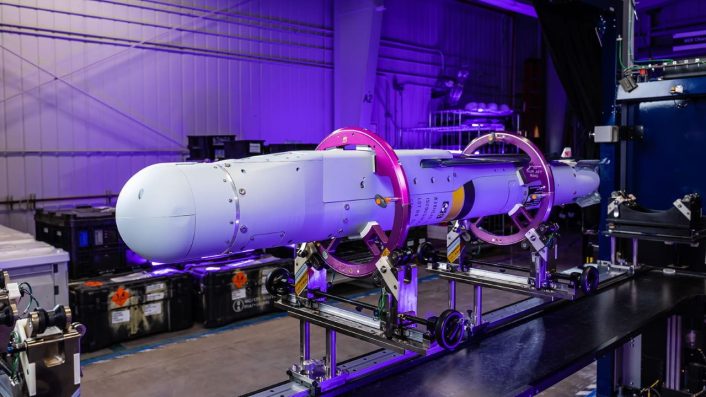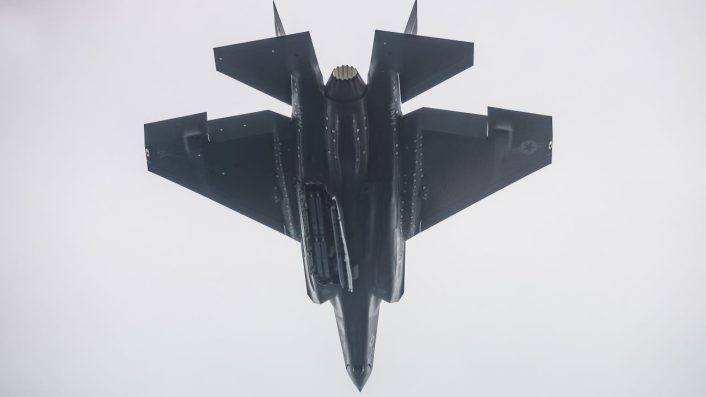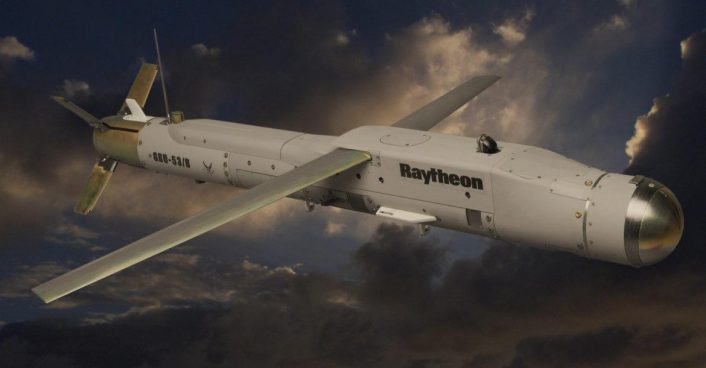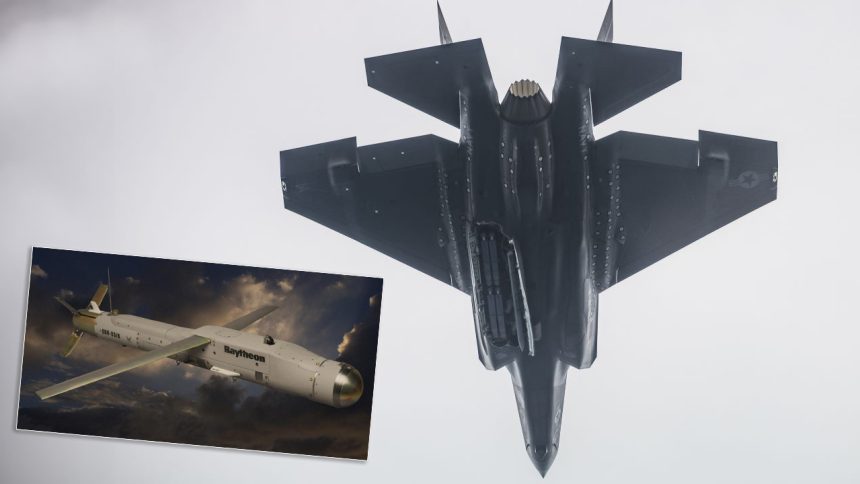The network-enabled StormBreaker smart weapon was part of 28 test missions in 2023, of which 14 with the F-35Cs, and the remaining ones with F-35B, F/A-18E/F and F-15E.
Raytheon conducted 28 tests of the StormBreaker smart weapon in 2023 from multiple aircraft, including the F-35C, F/A-18E/F, F-15E and F-35B. The company declared on Jul. 23, 2024 that the weapon achieved a 100 percent success rate on all the 14 planned jettisons from the F-35C.
The company, which made the announcement on the sidelines of the Farnborough Air Show, did not provide details about how the rest of the tests were divided on the other aircraft mentioned. StormBreaker is a precision-strike standoff, networked weapon and has the capability to receive updated target coordinates by airborne or ground controllers mid-flight via two-way datalink communications.
The weapon is capable of defeating moving and fixed targets. It can operate in adverse weather conditions through its tri-mode seeker that employs infrared and millimeter wave radar to see through fog, smoke and rain. The smart bomb can be carried on BRU-55 and BRU-61 multi-weapon racks and increase the loadout and targets struck per sortie by fighter aircraft.

Also called the GBU-53 SDB-II (Small Diameter Bomb-II), the U.S. Air Force wants more than 1,500 of the munitions, as per a $345 million contract awarded to Raytheon in Jan. 2024, Air and Space Forces had reported. This figure also includes FMS (Foreign Military Sales) to Finland, Germany, Italy and Norway.
On Jul. 26, Belgium became the weapon’s latest customer, after the State Department approved a FMS of 196 units to the country to equip its F-35s. The DSCA (Defense Security Cooperation Agency) delivered the required certification to Congress for the contract estimated at $115 million.
According to reports, in its fiscal year 2024 budget, the Pentagon asked for 920 SDB IIs for the Air Force, and 976 in fiscal 2022. The weapon began development when the Air Force contracted Raytheon in 2010 to launch development of a follow-on to the Boeing-produced GBU-39 Small Diameter Bomb.
The F-35 Lightning II fighter jet dropping a GBU-53 / B StormBreaker precision bomb. pic.twitter.com/SzuepLAMYG
— Global Defense Insight (@Defense_Talks) March 24, 2023
Urgent need and rapid certification
Budget documents say the total planned acquisition of the StormBreaker is 21,610 units for the Air Force and 5,800 for the Navy. The weapon is considered a “joint-interest Air Force and Navy major acquisition program”, with the Air Force as the lead service.
The weapon was first approved for use from the F-15E Strike Eagle on Sep. 23, 2020, following a combination of 138 developmental and operational flight tests at Eglin AFB. RTX then announced in Nov. 2023 that the U.S. Navy fielded the SDB-II on the F/A-18E/F Super Hornet.
This was followed by a drop test from an F-35B Lightning II for the first time in 2021. The weapon was also tested from the F-35C in Sep. 2023, to gather and analyze data on environment and loads. This was done to “inform a flight clearance decision about the next phase of integration testing, airborne separation tests,” which were scheduled to take place later that year.
StormBreaker‘s small size enables the use of fewer aircraft to take out the same number of targets as larger weapons that require multiple jets. For instance, the F-15E can carry up to 28 SDB IIs by using seven BRU-61A racks, each with four weapons.

Weapon capability
The company says the 204 lb (92 kg) bomb can hit static and moving targets in adverse, low-visibility weather conditions with its tri-mode seeker, which include an IIR (Imaging Infrared), a millimeter wave radar and a semi-active laser. The target lasing can be performed by the laser designators of EO (Electro-Optical) pods, like the Sniper or Litening, or infantry teams on the ground.
While the IIR offers enhanced target discrimination, the millimeter wave radar can penetrate through obscuring weather, cloudy or foggy conditions. “The tri-mode seeker shares targeting information among all three modes,” mentions RTX. The weapon can also prioritize targets autonomously, and its GPS/INS guidance allows it to be retargeted after the weapon’s release.
A two-way data link allows the SDB-II to receive updated target coordinates mid-flight, sent by either airborne or ground controllers. Whether this suggests the weapon’s control can be transferred from the pilot to an infantry or a special operations team on the ground is unclear, but the framing suggests such a capability.
🔶🇺🇲 Raytheon, StormBreaker akıllı bombaları için 344 milyon dolarlık anlaşma imzaladı.
🔹ABD Savunma Bakanlığı Cuma günü Raytheon için özellikle StormBreaker (SDBII, GBU-53/B) Üretim Lot 10’a yönelik 344 milyon dolarlık bir sözleşme değişikliğinin onaylandığını duyurdu. pic.twitter.com/HIFBRO8Hfs
— THS Haber (@temmuzhaber) December 30, 2023
Tactical need
Ukraine has particularly demonstrated massive land-centric operations with both heavy, light, fixed and mobile ground platforms, prolonged artillery duels, classic pre-Cold War era tank battles and attritional infantry trench warfare.
Russia also excelled at EW (Electronic Warfare), with Ukraine showing how many Western air-to-ground gun and rocket artillery munitions rapidly became ineffective to Moscow’s jamming. Interestingly, the GBU-53’s predecessor, the GBU-39 SDB was a rare exception that saw a significant level of success, as The Aviationist had reported.

Poor weather and battlefield obscurants continue to endanger warfighters as adversaries rely on these conditions to escape attacks. This has established the requirement for an all-weather solution that enhances warfighters’ capabilities when visibility is limited.
“Service-members need trusted weapons that are highly survivable, network enabled and keep them as far from harm’s way as possible,” said Paul Ferraro, Raytheon’s president of Air & Space Defense Systems in a statement.









